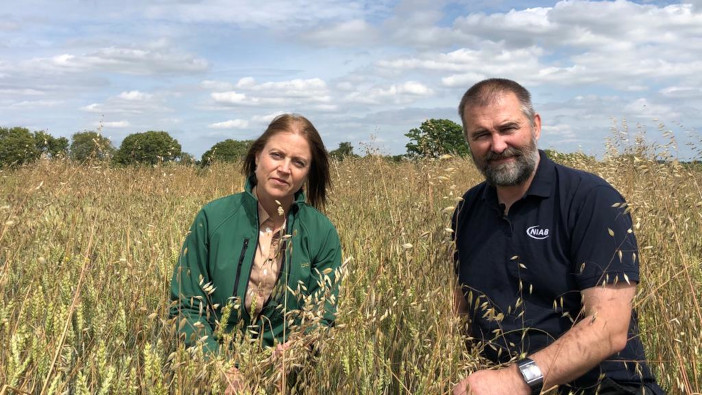Growers concerned about wild oat populations are being advised to get seed samples tested to help plan control strategies.
Early July is the ideal time to collect samples as seeds will have matured and testing could show whether herbicide resistance is present, which actives are affected and the dominant wild oat species.
Hutchinsons agronomist Michael Shemilt warns that resistant wild oats can quickly become unmanageable unless appropriate measures are taken.
“Unlike blackgrass, seeds remain viable in the soil for many years, so there’s always a risk problems re-emerge in the future.”
He added that resistance is more of a concern in cereal-heavy rotations, where a more limited range of chemistry is used.
ADAS resistance testing over 13 years shows that where resistance occurs, it is most likely to be fenoxaprop, followed by clodinafop, mesosulfuron + iodosulfuron, and pinoxaden.
Recent years have also found a few populations resistant to pyroxsulam, but so far, there has been little resistance to cycloxydim.
Factors to consider
While resistance is a threat, it is stressed that it remains less widespread in oats than it is in other grassweeds, notably blackgrass and Italian ryegrass.
ADAS notes that 68% of wild oat samples remained sensitive to herbicides, while in a NIAB survey, sponsored by Life Scientific, 85-90% were susceptible to the actives pinoxaden and iodosulfuron + mesosulfuron.
Cross-resistance is also rare, explains Life Scientific’s Ruth Stanley, so in cases where resistance is found, other options will be available to growers.
There are also other factors which may cause inadequate control, including poor application and bad timing. The move away from ALS-inhibiting chemistry for blackgrass may have also increased the risk.
Ruth says: “Although the efficacy of such chemistry against black-grass has declined, it was still doing a good job on wild oats, so as people stopped using it, more problems started to appear.”
Knowing your oats
NIAB’s John Cussans explains that there are two main species of wild oats in the UK: common/spring wild oats (Avena fatua) is the most prevalent type in many areas, and winter wild oats (Avena sterilis subspecies ludoviciana), which are becoming more widespread.
“Unlike for blackgrass, changing the rotation to include more spring cropping, for example, simply shifts the balance of the population mix and does little to control wild oats.”
He adds that delaying cultivations can reduce pressure as shed seeds will be eaten by wildlife, while others will germinate or be lost to fungal attack. Incorporating fresh seed could simply induce dormancy.
Taking samples
For resistance testing to work and be as accurate as possible, a good seed sample is essential. Mr Cussans outlines five key steps to do this:
- Timing: Wait until seed is ripe, with hard endosperm, just like any cereal seed
- Collection: Either run your hand along the inflorescence of the wild oat to gently dislodge seeds ready to be shed, or shake heads into a bucket. Do not strip seed from heads or cut heads off as seed is unlikely to have matured fully
- Quantity: Because of the large seed size in comparison to other weeds, and likelihood of samples including some awns, husk, etc, ideally collect around three coffee mugs full of seed to send for resistance testing
- Handling: Store seeds indoors in a paper bag or open container for a couple of days, then post in a paper bag
- Results: Results generally take a few weeks to return and will confirm the presence and type of resistance, and the chemistry affected.


